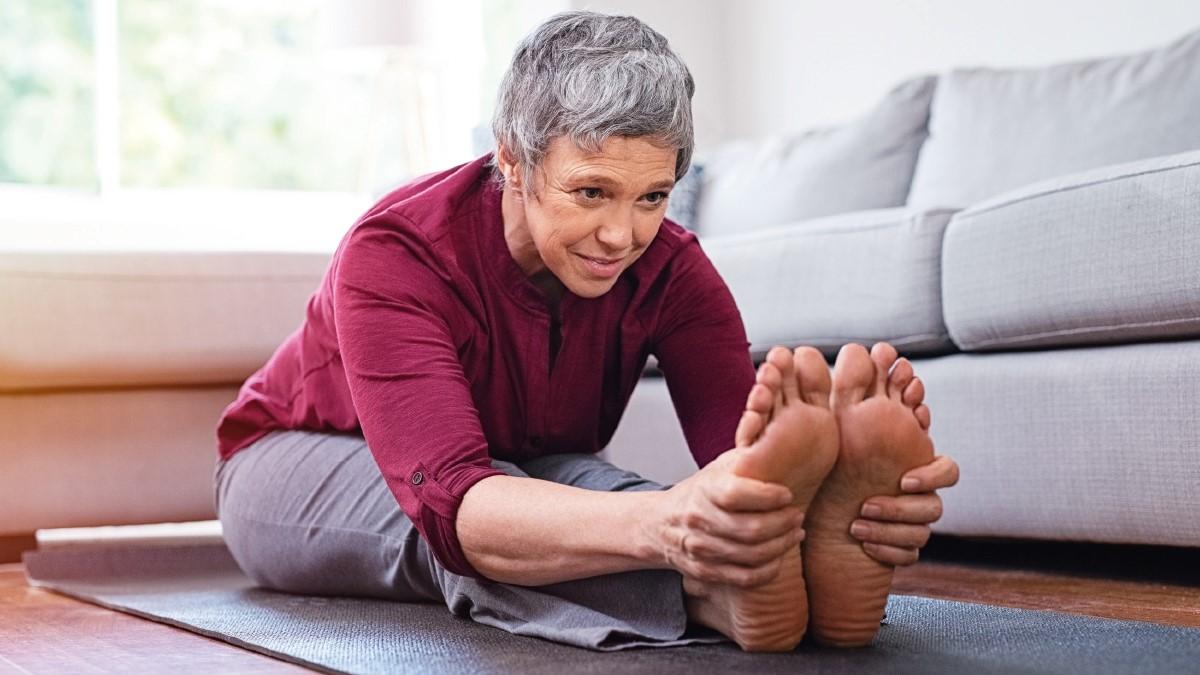Meaningful increases in physical activity levels after cancer can be sustained for three months or more

Why was this study needed?
While advances in early diagnosis and treatment mean that more people are surviving cancer, the disease can have a long-term impact on health. Cancer survivors are more likely to suffer from other serious conditions, including heart disease.
Few people achieve the recommended levels of physical activity after cancer. To gain long-term health benefits, the activity has to be sustained over time, but we know little about which interventions are successful in promoting long-term change.
This is the first review of physical activity maintenance across cancer types. Reviewers looked at changes in intervention groups and control groups. Those who agree to take part in exercise trials are often highly motivated to make changes and may modify their behaviour irrespective of group allocation.
What did this study do?
This systematic review and meta-analysis pooled 19 studies that measured the effect of interventions for physical activity on 5,792 adult cancer survivors. Numbers of participants in each study ranged from 41 to 641. Studies were from the USA, Canada, Australia, the Netherlands, Hong Kong, Ireland and one from the UK.
Interventions included supervised group exercise sessions, telephone coaching, education and encouragement to do home-based exercise. Providers included physiotherapists, counsellors and health coaches. Control groups were mostly given printed exercise leaflets.
Participants were not representative of cancer populations more broadly. Many were relatively young, (average age 58) well-educated women most often after breast cancer. Self-reported physical activity measures were used, which may not be entirely accurate.
What did it find?
Three months after the end of the intervention:
- Physical activity was maintained at a higher level: an average of 65 minutes per week (95 per cent confidence interval [CI] 46 to 85) compared with an increase of 27 minutes in the control groups (95 per cent CI 11 to 43).
- Comparing the groups, interventions had a moderate effect on increasing physical activity (standardised mean difference 0.25, 95 per cent CI 0.16 to 0.35).
- Participants in studies that did not produce any notable change in behaviour tended to be older and had more physical limitations. Interventions in less successful groups were less likely to include a supervised element.
What does current guidance say on this issue?
NICE recommends exercise to improve cancer-related fatigue. Their general recommendations for inactive people are to build up to being moderately active for at least 150 minutes per week, with two sessions of resistance exercise each week to build muscle strength and to avoid inactivity.
This is in line with American guidelines, which recommend cancer survivors follow general population exercise guidelines.
What are the implications?
These findings support the conclusions of other studies in cancer populations that even minimal input, such as providing printed exercise advice, can increase physical activity levels.
As there was variability in the interventions provided and providers delivering them, there remains some uncertainty about how to deliver exercise programme.
Where resources are scarce, the more expensive one-to-one support could be offered to vulnerable groups, if it works for them. Younger, more physically fit adults may achieve meaningful improvement in physical activity with lower-level intervention.
Expert View
Orla McCourt, HEE/NIHR clinical doctoral research fellow, University College London Hospitals NHS Foundation Trust and research officer for ACPOPC
More people are living with and beyond cancer in the UK, and physiotherapists – whatever our field – will increasingly encounter more people who have or have had cancer. Good levels of activity are important for improving and maintaining physical function during and after cancer treatment. Community and home-based physical activity programmes contribute to functional improvements and could promote sustainability of functional gains made through rehabilitation in hospital or clinical settings.
This review indicates that studies using interventions conducted in group settings and including behaviour change theory are most effective at improving physical function. Physios working with people living with and beyond cancer should explore what rehab and exercise services are provided in their communities, and become familiar with the components of these. Building stronger relationships and referral links between services will only enhance the transition of people between settings and widen their access to ongoing support. Physios providing, referring or signposting patients to community exercise and physical activity schemes fulfil an important role in growing a system-wide approach to getting more people active following cancer treatment and rehabilitation.
Citation and funding
Grimmett C, Corbett T, Brunet J et al. meta-analysis of maintenance of physical activity behaviour change in cancer survivors. Int J Behav Nutr Phys Act. 2019:16(37). This project was funded by an NIHR post-doctoral fellowship.
Bibliography
Koutoukidis DA, Lopes S, Fisher A et al. Lifestyle advice to cancer survivors: a qualitative study on the perspectives of health professionals. London. BMJ Open. 2018;8:e020313. Macmillan Cancer Support. Interventions to promote physical activity for people living with and beyond cancer: evidence-based guidelines. London: Macmillan Cancer Support; 2012. Mishra S, Scherer R, Geigle P et al. Exercise interventions on health-related quality of life for cancer survivors. Cochrane Database Syst Rev. 2012;(8):CD007586. NICE. Physical activity: brief advice for adults in primary care. London: National Institute for Health and Care Excellence; 2013. NICE. Advanced breast cancer: diagnosis and treatment. London: National Institute for Health and Care Excellence; 2009. NICE. Prostate cancer: diagnosis and management. London:National Institute for Health and Care Excellence; 2019. Rock CL, Doyle C, Demark-Wahnefried W et al. Nutrition and physical activity guidelines for cancer survivors. CA: Cancer J Clin. 2012;62(4):242-74
Number of subscribers: 2




































